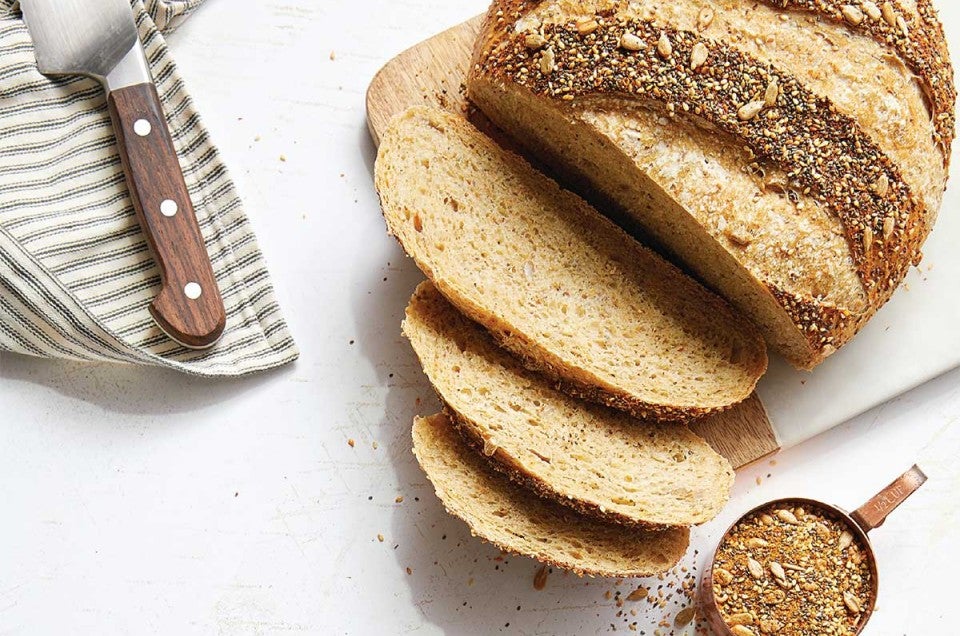


I'm a creature of habit. Like my yogi friends that hit the mat each day or our chickens on their morning stroll, routine helps me *bake* it through the week.
But sometimes I need a change — a tweak, a spark, a bucket of cold water? — to break the routine.
Our daily bread at home is what we call “Maura’s Bread," also known as Pain de Campagne. It’s a sourdough recipe from my friend Maura that can be made in the cracks of the day. I would even go so far as to say that our home is defined by this sturdy loaf on our table.
But what if we want to change it up a little? What if you have a loaf that’s your steady companion, but you’re feeling frisky for a change? Whether you’re making Maura’s Bread or another dependable recipe of your choosing, here are a few ways to keep your bread-making routine spicy and interesting.
Adding seeds, flakes, cornmeal, or even coarse wheat bran to the exterior of a loaf is one of the easiest, quickest ways to bring some “Wow!” to the table. From sesame or sunflower seeds to flaked oats, barley, or even Everything Bagel Topping, sticking additions to the outside of a loaf might be my favorite trick ever. These nuts, seeds, and flakes intensify during baking to give your bread a whole new flavor and textural dimension.
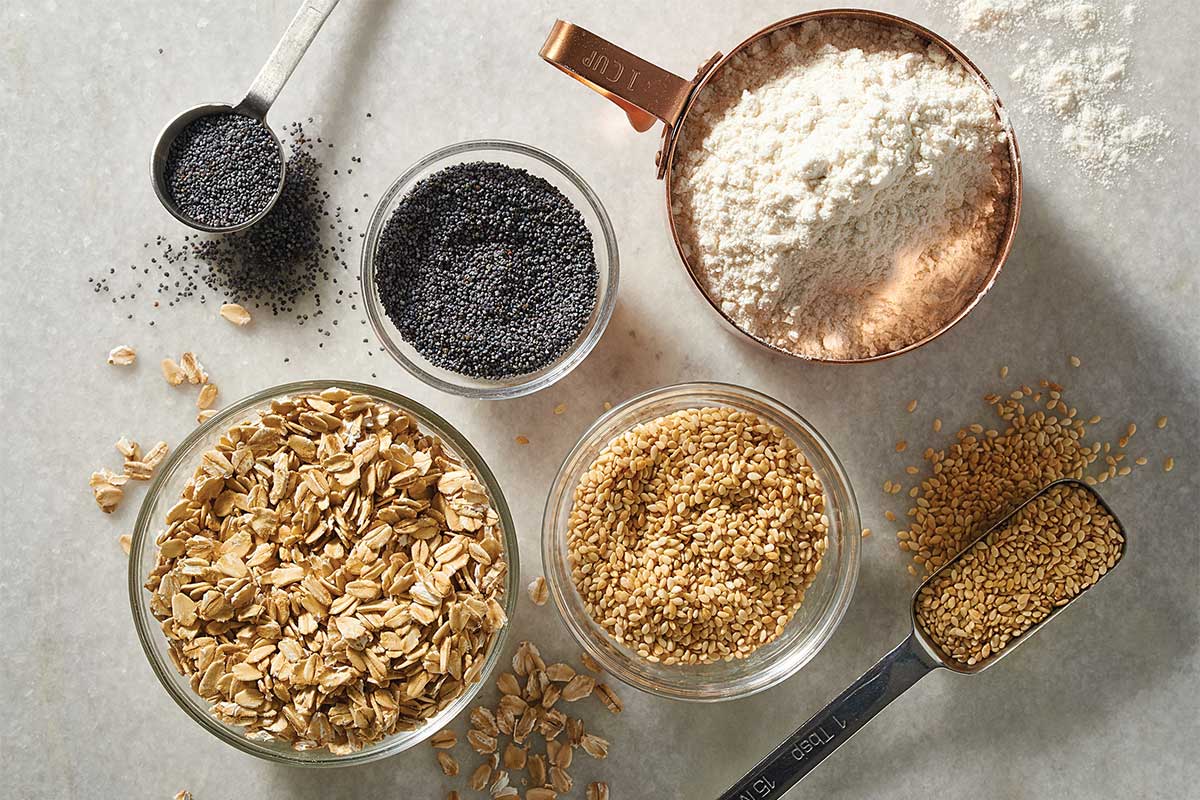
To add a seeded crust to a loaf or rolls, you’ll first make a seed tray. Thoroughly moisten a dish towel, then wring out some of the water, leaving it quite wet to the touch. Spread the towel flat onto a baking sheet or tray. Pour a generous quantity of seeds, oats, bran, or more — a single variety or a wild blend of your choosing — onto a separate baking tray.
After shaping your bread, place what will become the top surface of your finished loaf onto the damp dish towel, gently rocking it back and forth to moisten.
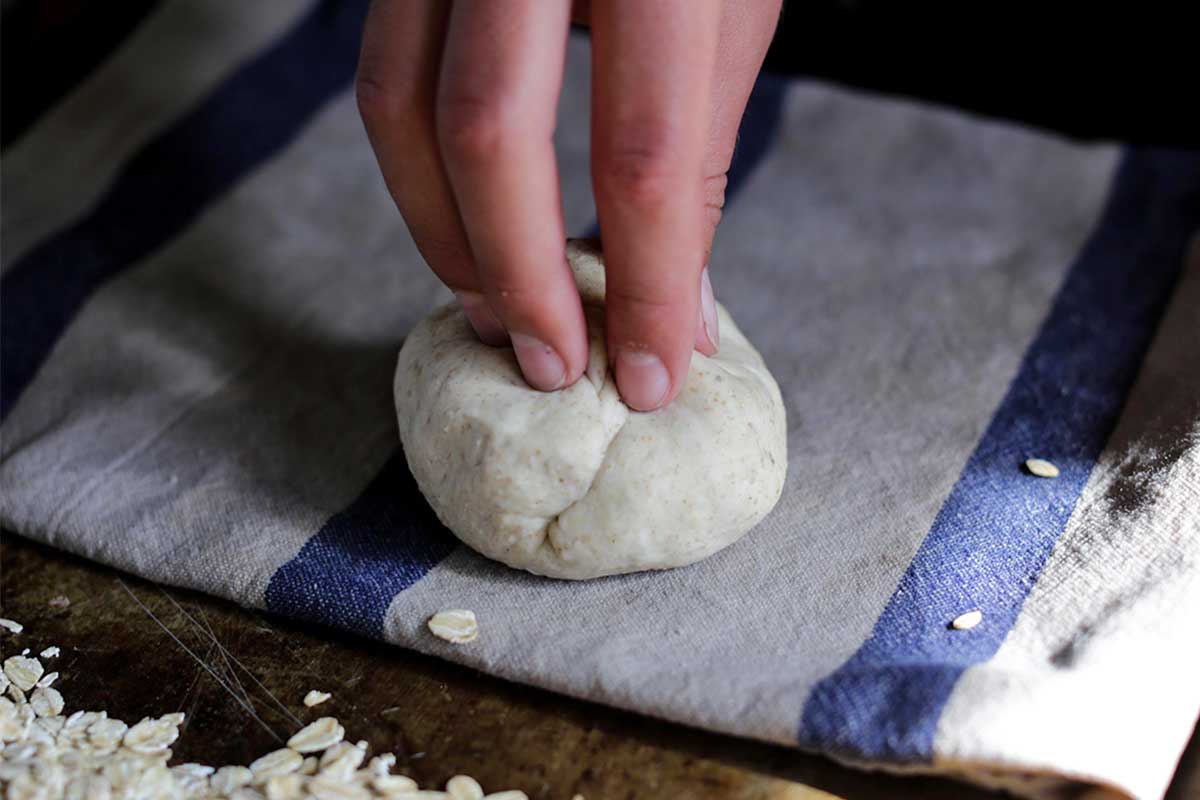
Then place the moistened portion of the dough onto the seed bed, rocking in a similar fashion to fully coat the loaf with seeds (or any topping of your choosing, like oats as demonstrated here).
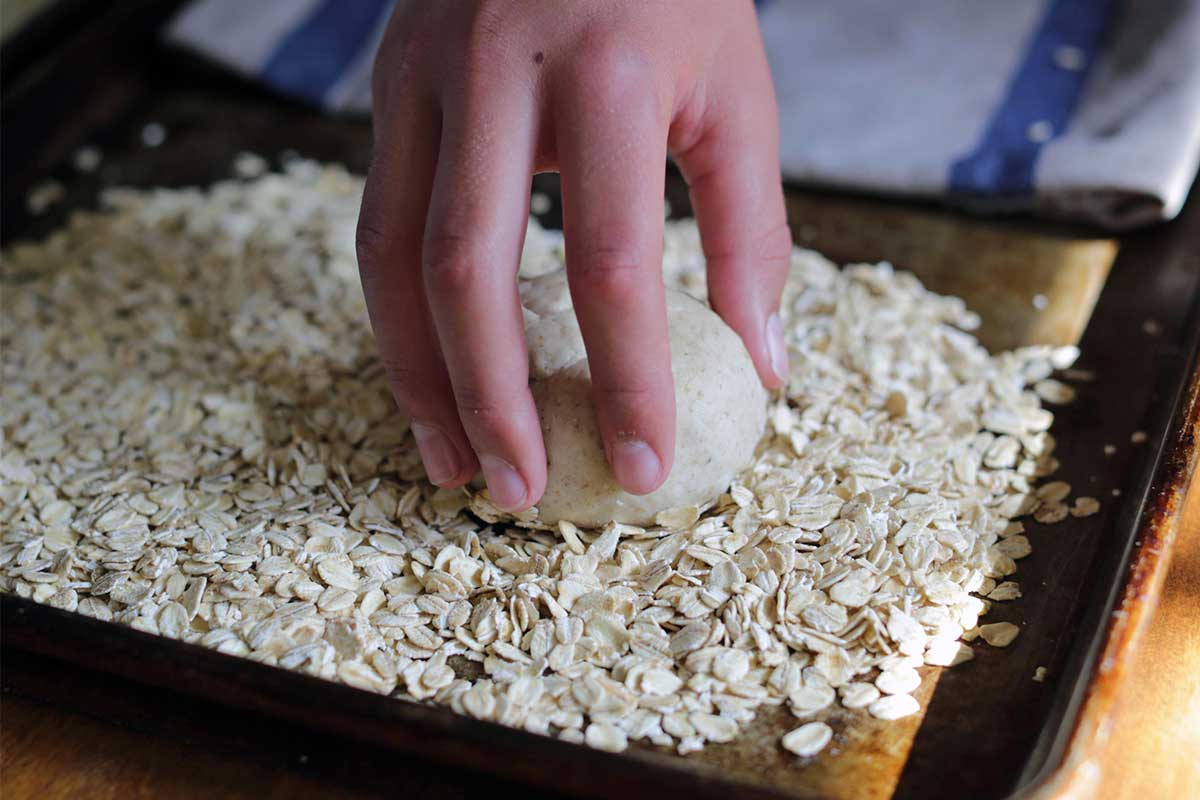
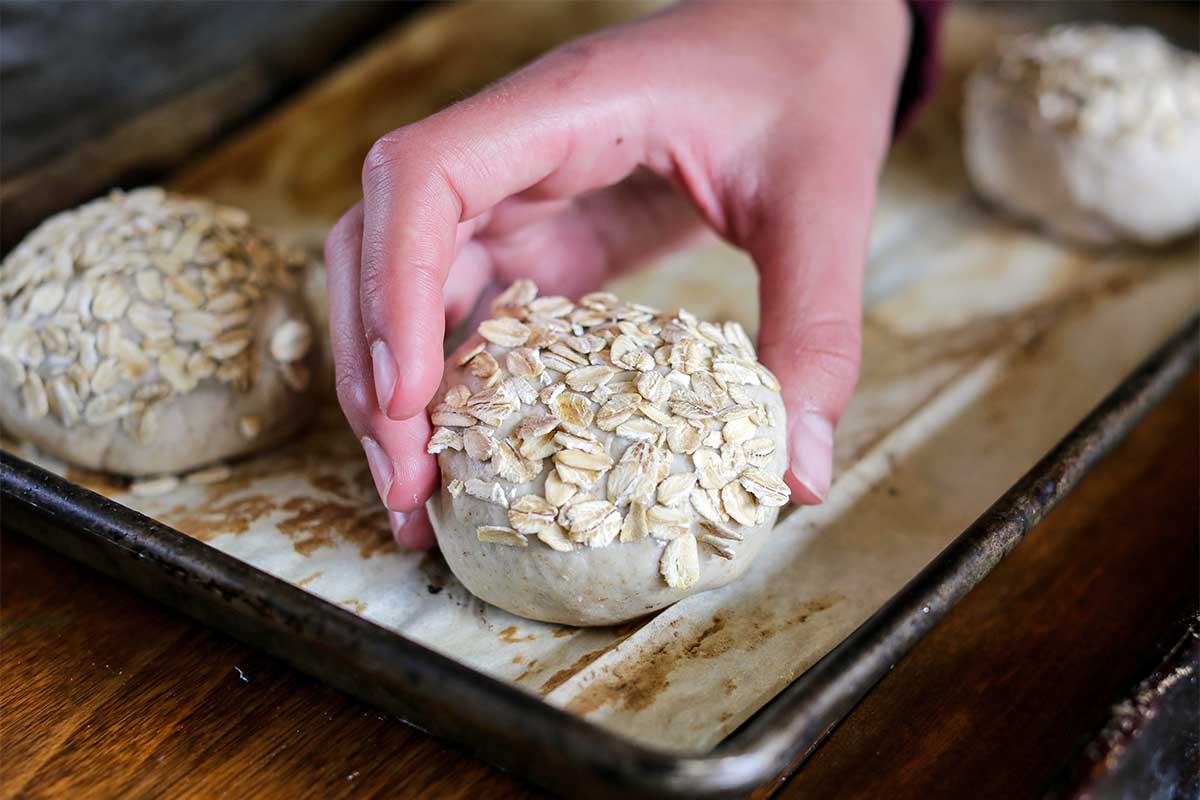
Let it sit for a few seconds on the seed bed while the seeds adhere, then place the loaf into your banneton or proofing vessel until baking. If using a banneton, it will be seed-side down; if you’re proofing in the baking vessel, place it seed-side up.
Pro tips:
Many of the things I like on the outside of a loaf are equally good on the inside. Chopped nuts, soaked grains, or flakes such as oat or barley boost color, texture, and flavor in delightful ways. For an off-the-shelf grain mixture, you can use our Harvest Grains Blend, or dream up your own creative combination. As you explore, don’t overlook aromatics — a sprinkle of fennel, caraway, nigella, or buckwheat groats adds fantastic aromas.
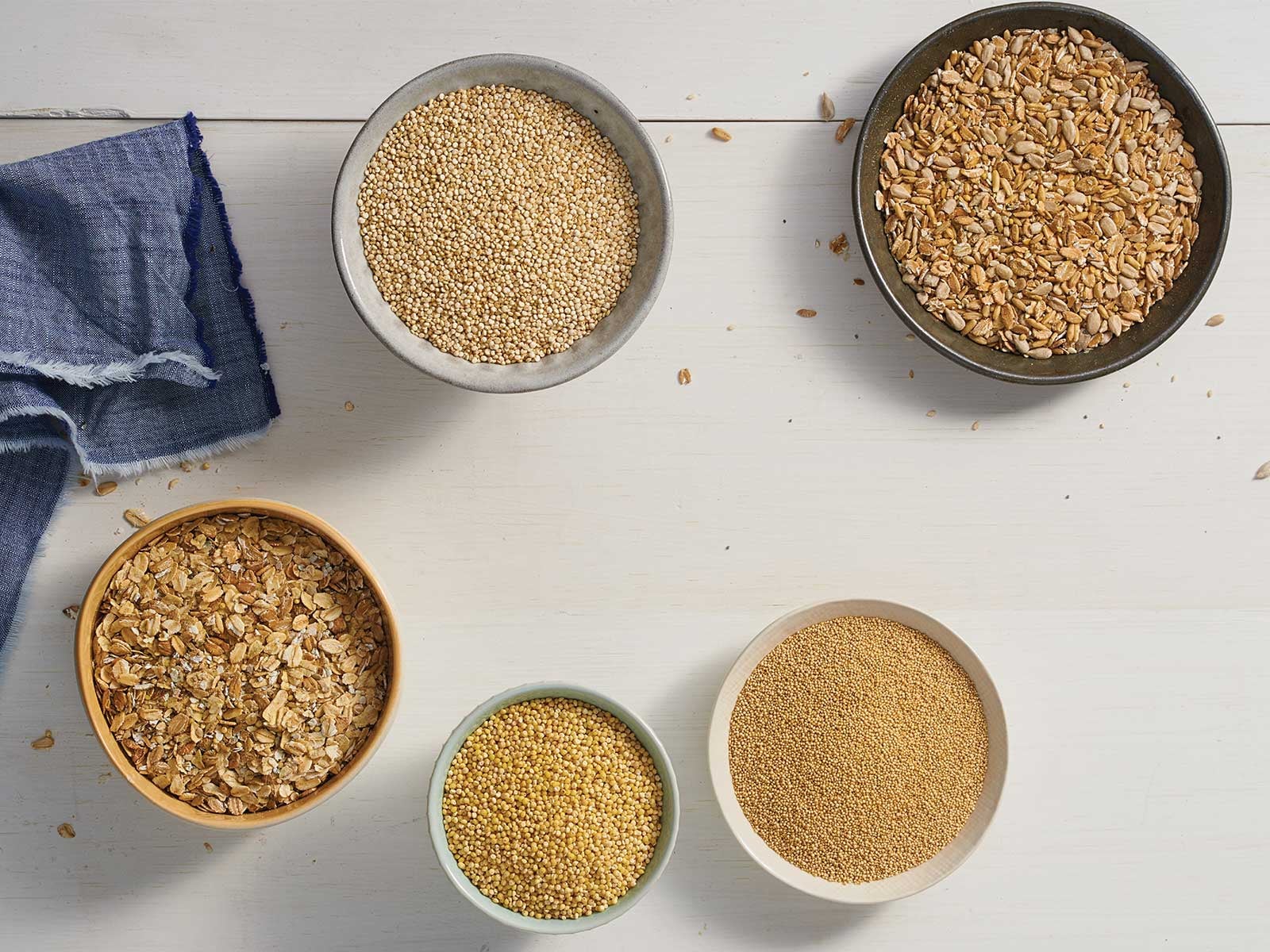
When adding coarse dry ingredients to a dough, I always presoak these additions, making what bakers call a “soaker.” Presoaking dense grains will ensure they don’t pull moisture from your dough, leaving you with a dense, brick-like loaf. Soaking also helps with digestibility and softens the grains for better eating.
Before we get into this, let me warn you that we’re going off road a little. If you’re not familiar with baker’s percentages or want a more direct route to a seeded loaf of bread, I recommend one of our reliable recipes like this Seeded Multigrain Sourdough Bread. My hope (if you come along for this ride!) is that by seeing how I make these changes, you might be emboldened to work beyond our recipes and employ your own ideas.
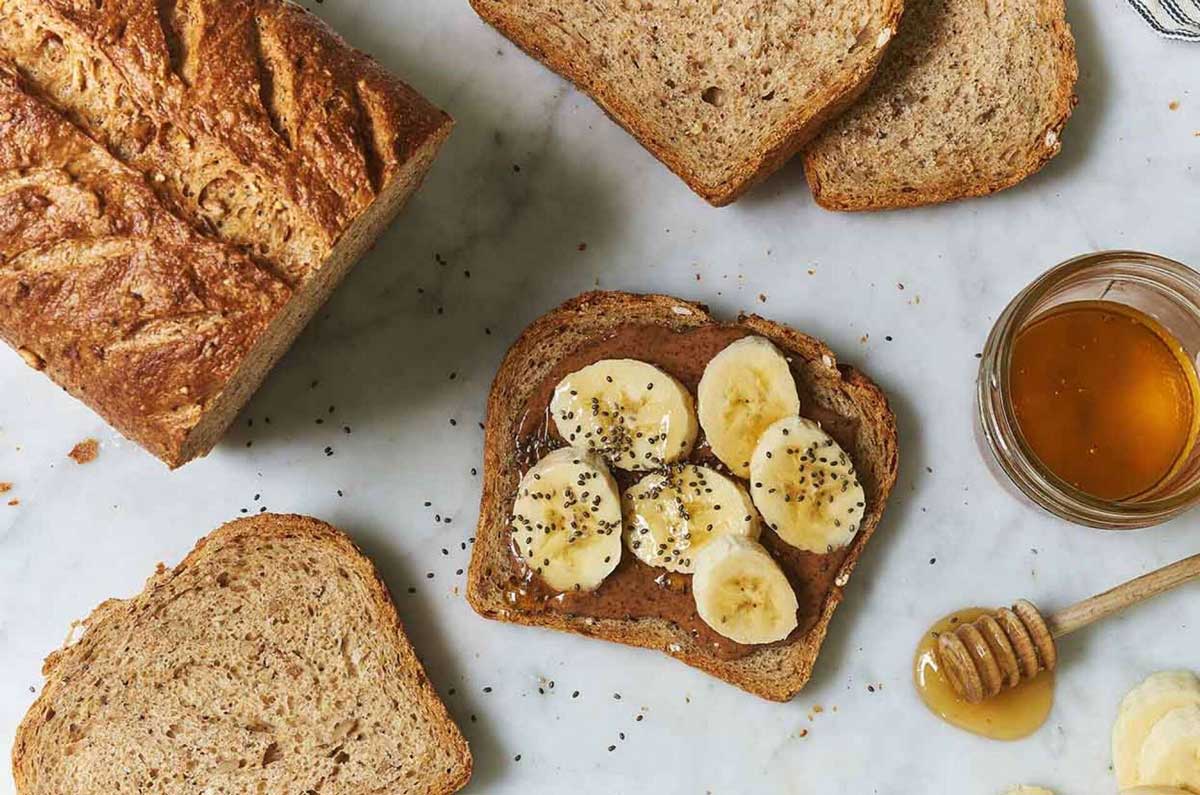
So let’s say that I want to make Maura’s Bread, but I want a multi-seed version. The first thing I do is find the total flour quantity. (This will be the sum of any flour used in the recipe, including preferments.) In baker’s percentages, I add grains at about 20% of the total flour weight. So for Maura’s Bread, which has 1,000 total grams of flour, I measure 200g of grain, mix them with equal weight water (200g) and soak for a couple of hours (or preferably overnight) before I mix the dough.
Depending on what you like, the 20% can go up or down — this is your recipe, right?!
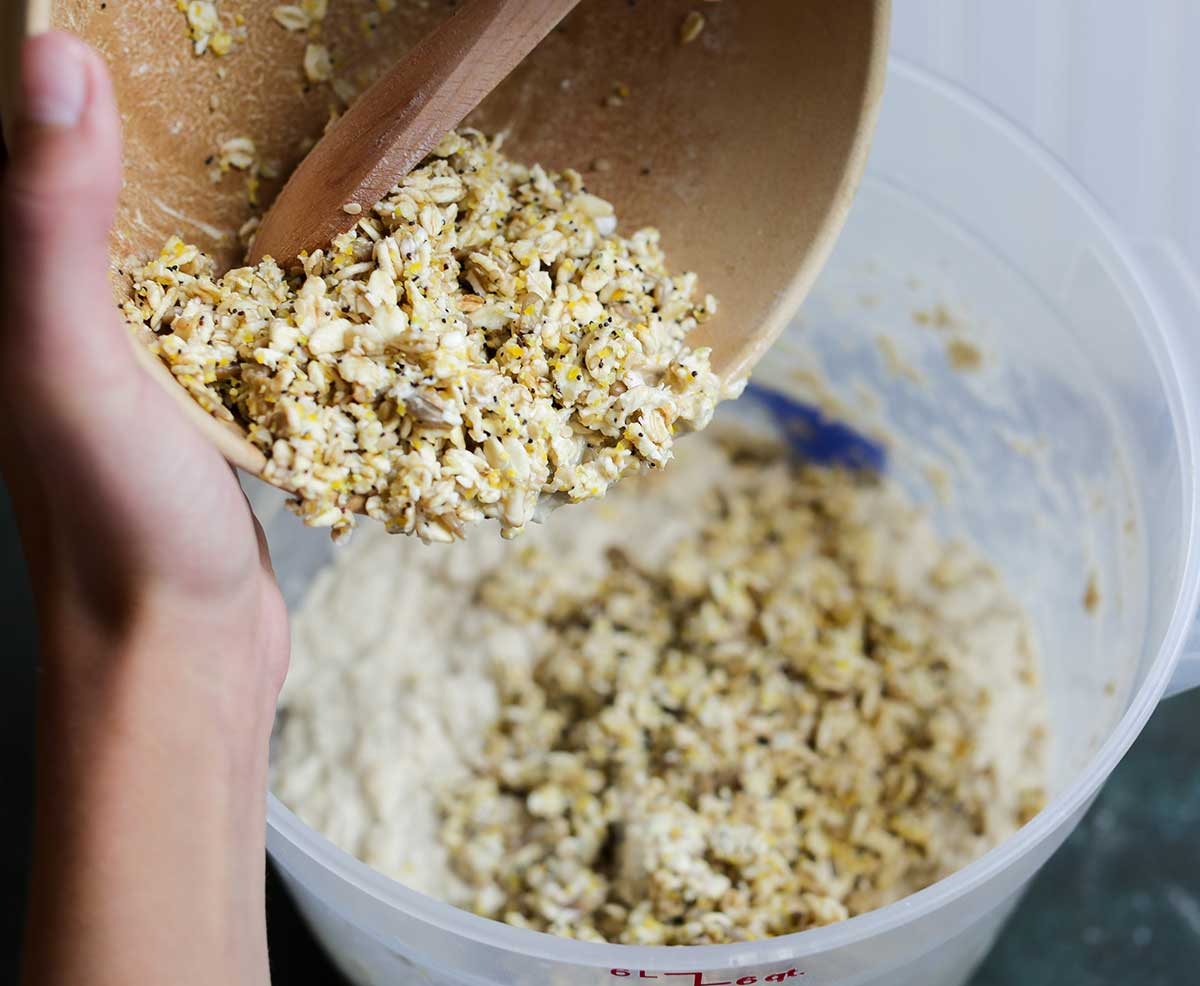
To add the grain, I recommend that you mix your bread dough as you would normally (without the grains). Toward the end of your mixing (whether working by hand or with a stand mixer), spread the soaked grains on top of the dough and fold to incorporate, working the dough until the mixture is roughly homogenous.
Pro tips:
Last but not least, flour offers endless options for alterations. Rather than sticking to the straight roads on the journey to best bread, let’s get off the highway and see what’s out there. In addition to my trusty bag of all-purpose, I keep whole rye, medium rye, spelt, whole wheat, golden whole wheat, cornmeal, and buckwheat in my pantry too. My collection is like the junk drawer in the kitchen — who knows what you’ll find!
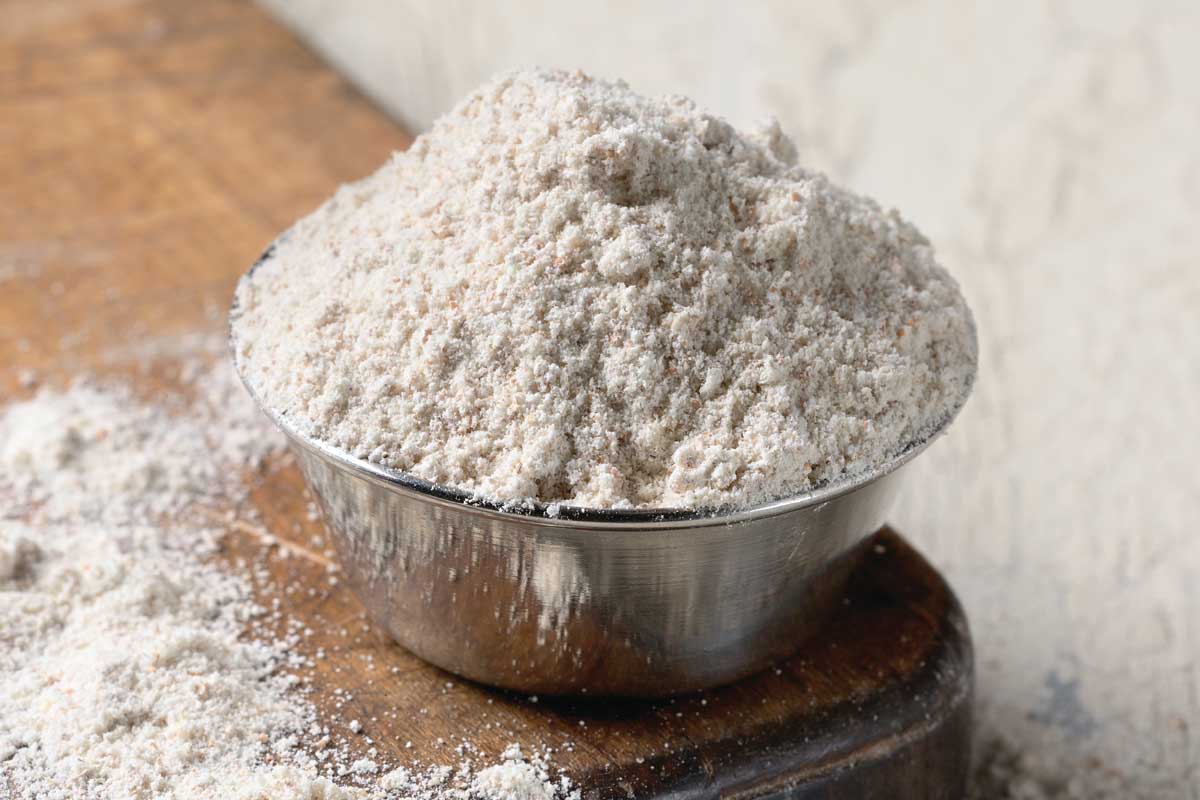
This is a good example of swapping “like with like.” What I mean is that if a recipe already has a portion of whole-grain flour, start there by subbing in a different whole grain. While every change has impacts, whole grains as a category tend to take roughly similar quantities of water, so this is an easy way to start playing around.
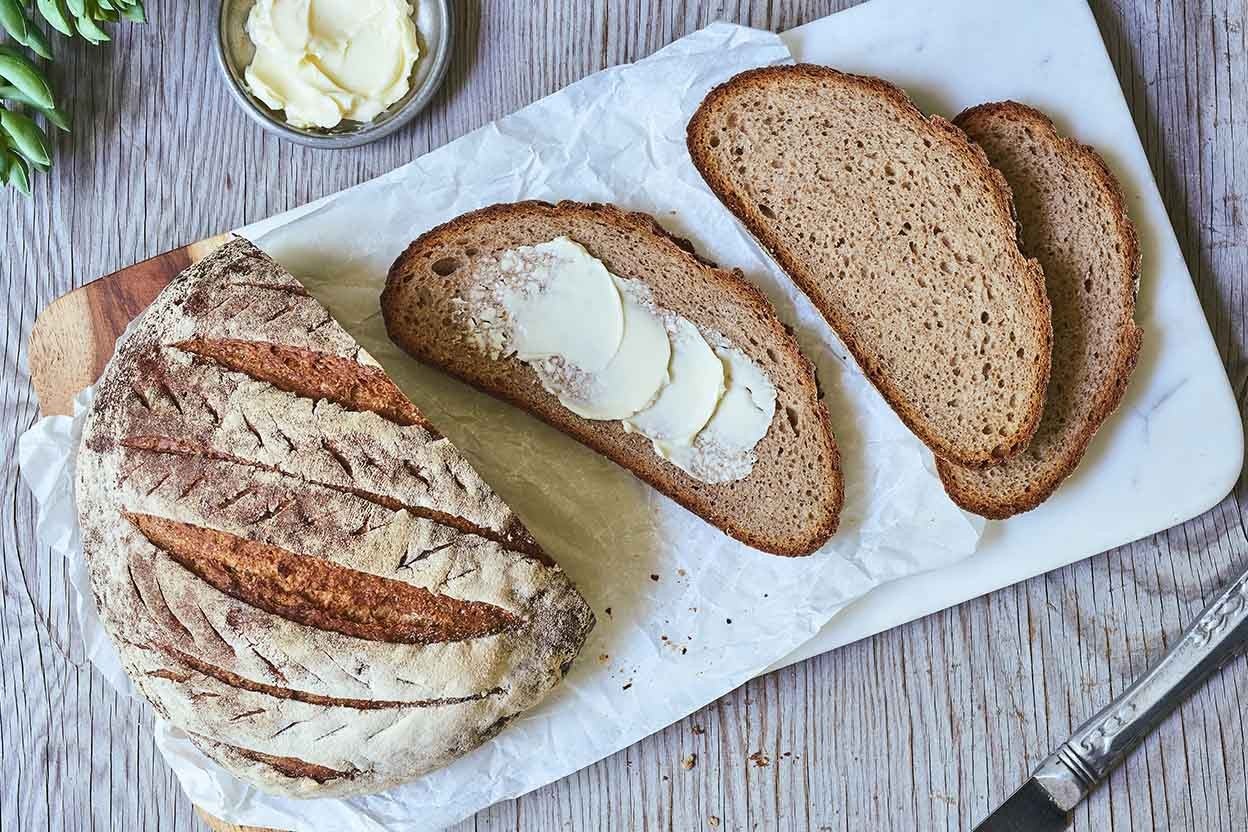
To spruce up a recipe that doesn’t contain whole grains (let’s use our Classic Baguette), I start by swapping in whole grains for around 10% to 15% of the total flour. The total flour in the baguette recipe is 538g so, from the amount of flour in the final dough (not the poolish) I’ll swap out about 53g to 80g of the all-purpose. I replace that portion with spelt, whole wheat, cornmeal, whatever I have on hand — these are all great options for adding color, flavor, and overall complexity to some of my basic all-purpose breads.
This week my wife made our bread using 85% all-purpose and 15% whole buckwheat. The crumb is beautifully gray-blue with just the faintest aroma of buckwheat — it’s been a real hit!
Pro tips:
Routines can be comforting, but they can also grow stale. So get out there and mix it up. Turn left instead of right on the morning stroll, wave to a neighbor that you haven’t met, maybe pick up a bag of seeds and add some to your trusty bread recipe — you may find yourself loving a new routine by the end of the week!
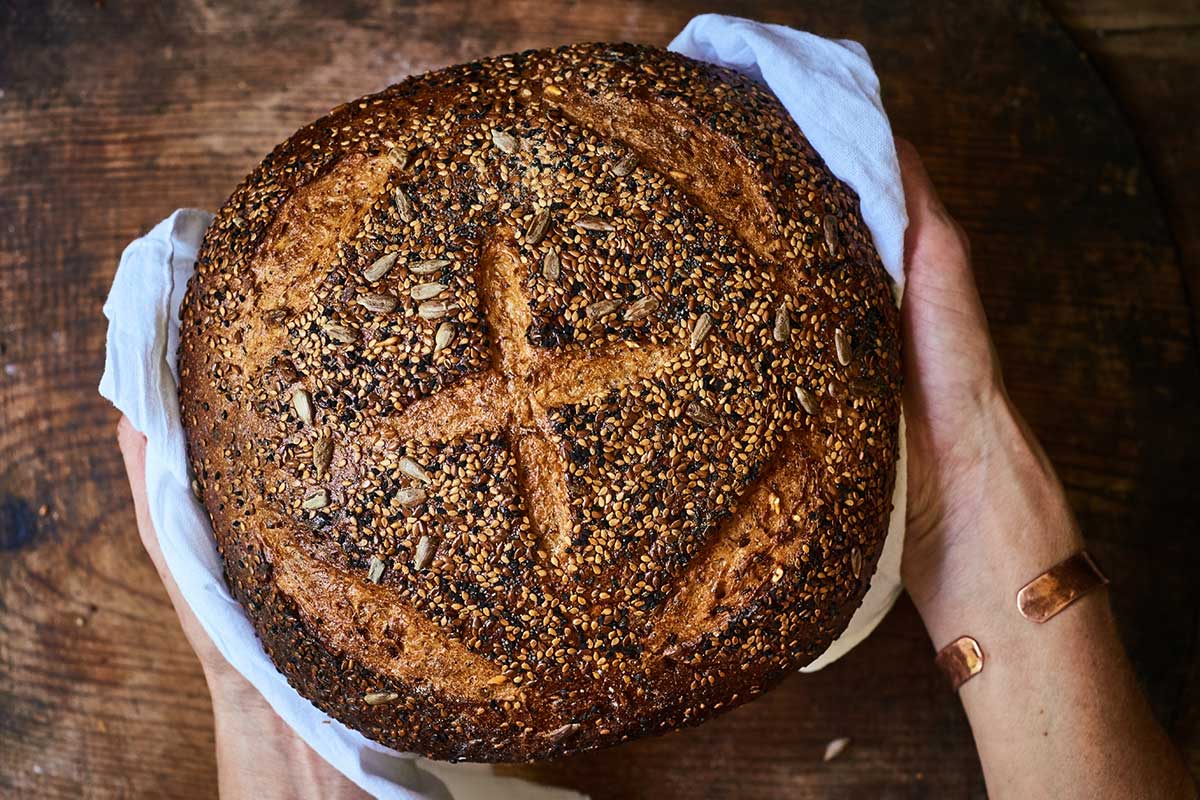
For more tips, tricks, and techniques to add to your bread-making practice, see our additional posts on artisan bread baking.


November 10, 2020 at 9:11am
When you add the soaker does this substitute for the percentage of flour or it is in addition? And if we (gasp) do not YET have a scale would estimating by volume be ok? Thanks!
Signed, an amateur baker
November 10, 2020 at 12:11pm
In reply to When you add the soaker does… by Nancy (not verified)
Hi Nancy, the soaker is in addition to the amount of flour called for in the recipe. You can estimate by volume if need be. We have a wonderful Ingredient Weight Chart you can use to help with your volume equivalents. Happy experimenting!
November 9, 2020 at 7:58am
Greetings,
I happened across this blog article while waiting for my bread dough in its final proof before baking. It seems as though Martin wrote this article with me in mind! I have about 25 or so favorite bread recipes that I cycle through - sourdough, yeasted bread and rye breads. It seems as though my enthusiasm for these recipes is falling due to the routine of living in the times of corona virus. Martin offered many great suggestions that are clearly needed, at least in my kitchen. I appreciated Beth's question, as I was going to ask the same question.
Very kindest regards....
November 8, 2020 at 1:36pm
I always check the emails from KAF first when they come in but I have to say I’d like to see more (or ANY) non-sourdough bread recipes.
Please
and thank you
Jane
November 8, 2020 at 3:14pm
In reply to I always check the emails… by Jane (not verified)
Hi, Jane! I just double checked the email that went out this morning, and half of the bread recipes in it were non-sourdough recipes. If you're looking for anything in particular, though, we're more than happy to help you find something to suit your needs!
November 8, 2020 at 6:03pm
In reply to Hi, Jane! I just double… by kmayerovitch
Only one non-sourdough recipe lends itself to the kitchen without a bread machine or stand mixer...sigh.
November 9, 2020 at 11:51am
In reply to Only one non-sourdough… by Kerry (not verified)
We're more than happy to share with our email team that you'd like to see more non-enriched yeast bread recipes made with commercial yeast in our emails, Kerry. Happy baking!
November 2, 2020 at 9:44am
I live in Singapore where it is hot and humid (85% & above) all year round. When I cream butter and granulated sugar, I have to do it till I see the sugar has nearly dissolved right? The granulated sugar always take a longer time to cream than fine sugar.
I am worried that due to the heat and humidity, the butter will melt faster, resulting in over-creaming. I can never seem to get this creaming process just right. Please help.
November 3, 2020 at 9:37am
In reply to I live in Singapore where it… by Julie (not verified)
You're quite right, Julie! You may find it easier to start with ingredients that are slightly chilled if your kitchen environment is very hot and causing your butter to melt.
November 2, 2020 at 6:48am
for the soaker method, my guess is that it will take loaves longer to bake because there's more ingredients and more water. Any rule of thumb to help guide us? thanks!
Pagination